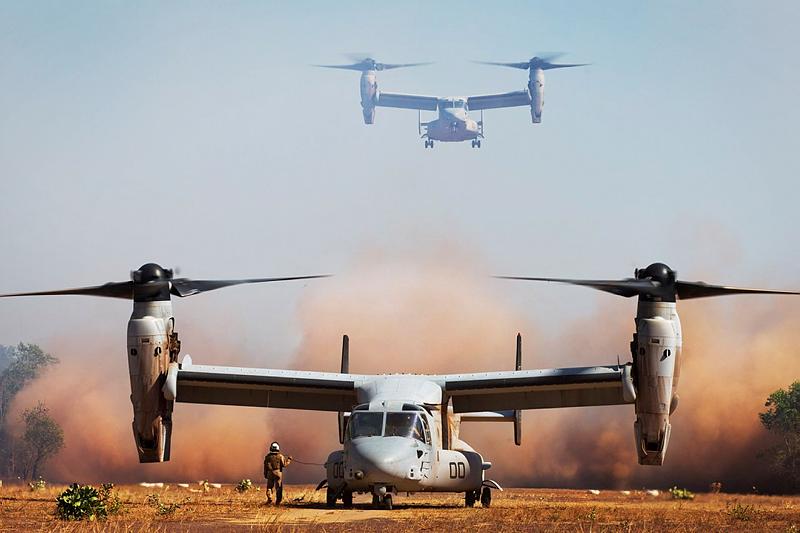The ADF and amphibious warfare: strategic guidance and joint capability development
Posted By Peter J. Dean, Jan K. Gleiman and Sarah Hately on July 29, 2015 @ 11:00
 [1]The ADF has developed a detailed, integrated and truly joint plan to develop and validate an impressive amphibious warfare capability by mid-2017 as part of Exercise Talisman Sabre. However this powerful joint force element will only be a proof of concept. It won’t yet be a sustainable on-call capability or ‘ready’ force.
[1]The ADF has developed a detailed, integrated and truly joint plan to develop and validate an impressive amphibious warfare capability by mid-2017 as part of Exercise Talisman Sabre. However this powerful joint force element will only be a proof of concept. It won’t yet be a sustainable on-call capability or ‘ready’ force.
Indeed, the ADF has yet to approve any conceptual plans for the sustainment of a joint amphibious warfare capability past 2017. It has yet to determine requirements for the joint readiness levels, the integrated joint force generation plan or even the mission expectations for the joint amphibious force. Significant capability gaps and shortfalls have been identified and require solutions.
There are only a few months left until the scheduled release of the Defence White Paper. This is an opportunity for the Australian government to clarify the expectations of Australia’s post 2017 amphibious force.
The strategic outlook for our primary operating environment means that we require the ability to conduct independent operations, operate in ‘uncertain’ environments against non-peer military forces and irregular threats as part of a larger coalition, and to conduct regional engagement.
The ADF’s amphibious capability needs to be a robust, scalable force that’s able to mobilise quickly; This would give the ADF the ability to act decisively in a crisis. Thus it’s essential for the forthcoming Defence White Paper and Force Structure Review to emphasise the importance of joint warfare.
In preparation for 2017, the ADF has established a network of players that have been coordinating the development of amphibious warfare capability. The organisations and committees involved have been characterised by some as ‘non-permanent’ or ‘temporary’. While the work has been impressive, the committees and working groups are highly reliant on consensus and most realise that this structure will have to evolve.
The Deployable Joint Force Headquarters concept of employment for the ADF’s amphibious capability has identified 19 capability gaps and shortfalls, most of which revolve around the integration of service systems and the procurement of major systems and equipment unique to amphibious operations.
Some of these capabilities shortfalls are being addressed but many are not. For example there is currently no planned procurement of an unmanned aerial system, which is a critical need for the effectiveness of Australia’s amphibious capability. The intelligence, surveillance and reconnaissance (ISR) gained would be delivered to all services but no single service has taken responsibility for capability provision. The unmanned aerial system would require aerial platforms supplied by the RAAF, a RAN vessel for launch, and will be used for operational and tactical ISR for both Navy and Army. There is no clearly identified capability manager.
Currently the Chief of the Navy is the lead Capability Manager (in coordination with the Chief of the Army) but in reality decisions are dependent on a hierarchical committee system that relies heavily on consensus. This system is cumbersome and complicated for generating needs statements and capability solutions.
Until such a time as a direct joint capabilities manager is identified, the conflicting needs of the services will work against any clear definition of the ADF’s amphibious requirements. This is evident in the lack of consideration of amphibious warfare needs in current services procurement plans, notably LAND 400.
In order to ensure that the ADF joint amphibious force is relevant, sustainable and suitable for the operations discussed above, the Defence Secretary and the Chief of the Defence Force should establish a permanent and empowered joint capability management system responsible for amphibious capability.
A truly integrated joint system will force the services to cooperate and come to agreements on how to fill or mitigate amphibious capability gaps. A joint capability manager would also define the user needs and coordinate submissions to government on future procurements.
The First Principles Review contains recommendations that may alleviate friction in the current system and streamline joint capabilities integration. But the effectiveness of these recommendations will depend on the legislated authority of the Chief of the Defence Force and Vice-Chief of the Defence Force to direct and manage the development of the ADF’s amphibious warfare capability.
Article printed from The Strategist: https://aspistrategist.ru
URL to article: /the-adf-and-amphibious-warfare-strategic-guidance-and-joint-capability-development/
URLs in this post:
[1] Image: https://aspistrategist.ru/wp-content/uploads/2015/07/20150713adf8517500_139.jpg
Click here to print.